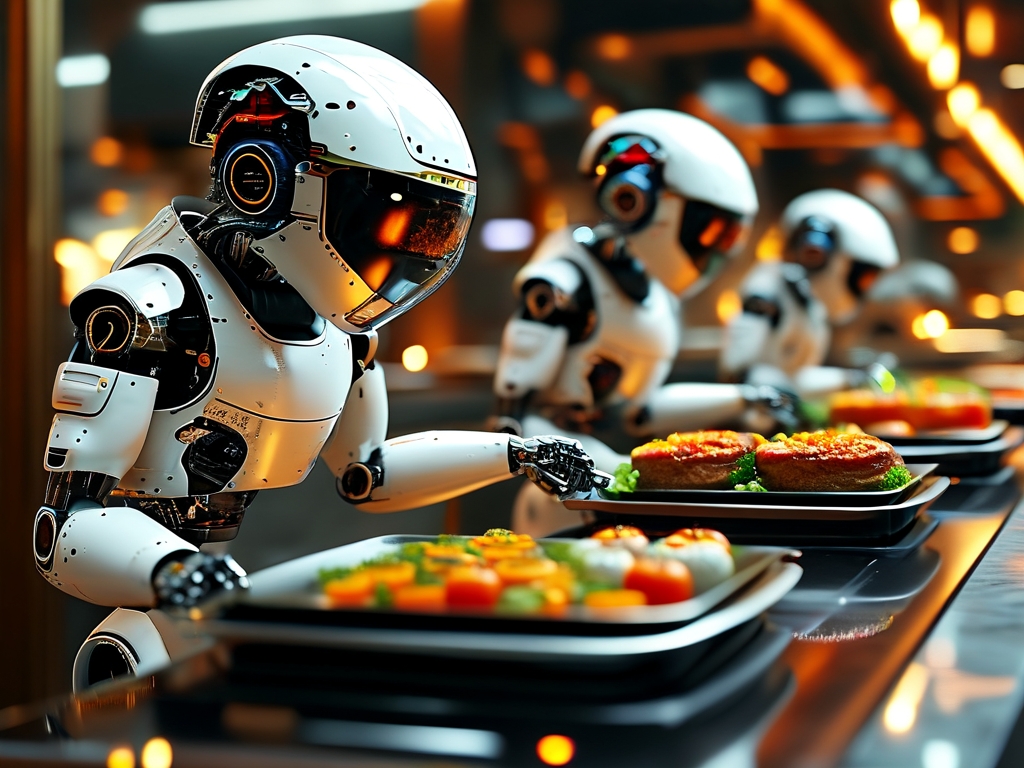The restaurant industry is undergoing a transformative shift as robot meal serving technology emerges from experimental labs to real-world kitchens. This innovation, blending artificial intelligence with mechanical precision, is redefining how meals reach customers’ tables. From fast-food chains to high-end establishments, automated systems are streamlining operations while challenging traditional notions of hospitality.

Core Mechanics Behind the Technology
Modern robotic serving systems combine three critical components: AI-powered order management, automated cooking stations, and intelligent delivery mechanisms. Proprietary algorithms process orders in milliseconds, optimizing preparation sequences based on meal complexity and kitchen layout. In test kitchens, these systems have demonstrated 40% faster order processing compared to human-managed workflows.
The physical delivery phase employs a mix of technologies adapted from manufacturing and logistics sectors. Rail-guided carts navigate predefined paths in upscale restaurants, while autonomous drones handle outdoor food delivery in urban test zones. For confined spaces, articulated robotic arms with pressure-sensitive grippers carefully transfer plates from kitchen counters to serving stations.
Operational Advantages
Early adopters report measurable improvements in service consistency. A 2023 case study from Singapore’s automated dim sum restaurant showed 98.7% order accuracy compared to the industry average of 89%. Temperature-controlled delivery pods maintain food warmth within 0.5°C variance throughout transit – a precision unattainable through manual serving.
Labor cost reductions remain a key driver, though not in the simplistic manner often portrayed. Instead of replacing entire staffs, smart implementations redistribute human effort. At a California-based pizza chain, robots handle 73% of repetitive plating tasks, allowing chefs to focus on recipe development and quality control. This hybrid model has increased employee retention by 22% in participating locations.
Consumer Perception Challenges
Despite technological promise, customer acceptance varies dramatically across demographics. A multinational survey revealed 68% of Gen Z diners actively prefer robotic service for quick-service meals, citing reduced human interaction as a positive factor. Contrastingly, 61% of patrons aged 50+ expressed discomfort with fully automated systems in fine dining environments.
Successful implementations address these concerns through thoughtful design. Tokyo’s Robot Sushi Bar uses cartoon-faced serving bots that bow when delivering orders, preserving ceremonial aspects of Japanese dining culture. In Munich, a Michelin-starred restaurant employs hidden ceiling tracks to make robotic servers nearly invisible, maintaining traditional ambiance while automating back-end logistics.
Technical Limitations and Solutions
Current systems struggle with unpredictable variables – a spilled drink or sudden pathway obstruction can disrupt automated workflows. Leading manufacturers are implementing multi-sensor fusion systems combining LiDAR, thermal imaging, and pressure feedback. Boston Dynamics’ ServeBot prototype demonstrated 89% obstacle avoidance success in crowded dining simulations last quarter.
Energy consumption remains another hurdle. The latest generation of serving robots uses swappable battery packs lasting 12 hours on single charge, compared to 6-hour endurance in 2021 models. Solar-powered charging stations are being piloted in Arizona and Dubai, potentially creating fully sustainable serving ecosystems.
Future Development Trajectory
Industry analysts predict three key advancements by 2026:
- Emotion-aware systems using facial recognition to adjust serving styles
- Self-sanitizing surfaces integrated with UV-C light arrays
- Blockchain-enabled food tracing through robotic handling systems
Major cloud kitchens are already testing robotic servers that communicate directly with smart kitchen appliances. In one pilot program, refrigerators automatically adjust stock levels based on robots’ real-time ingredient consumption reports, reducing food waste by 37%.
Ethical Considerations
The technology’s expansion raises important questions about workforce impacts. Contrary to doomsday predictions, the World Restaurant Association’s 2024 report suggests automation will create 2.3 million new tech maintenance roles by 2030, offsetting 60% of displaced serving jobs. However, this requires substantial retraining investments – a challenge governments and corporations are only beginning to address.
As robot meal serving evolves from novelty to necessity, its ultimate success hinges on balancing efficiency with emotional intelligence. The restaurants thriving in this new era will be those that harness automation not to eliminate human touch, but to redefine it – creating dining experiences where technology amplifies rather than replaces culinary artistry.









